Most Teachers Are Like Leaping Salmon
A MiddleWeb Blog
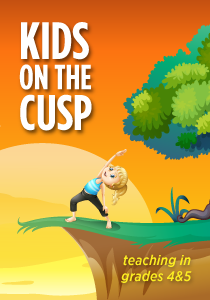 Salmon are amazing fish. They are feisty and determined. Salmon have an ever-changing life cycle. They start out in a streambed. Then they leave their home and travel downstream to the ocean.
Salmon are amazing fish. They are feisty and determined. Salmon have an ever-changing life cycle. They start out in a streambed. Then they leave their home and travel downstream to the ocean.
After they mature for a few years in the waters of the Bering Sea and the Gulf of Alaska, there comes a moment when they automatically know that it is time to head back to the streambed where it all began. They will follow this instinct without question, even if it kills them.
Salmon can thrive in both freshwater streams and in the vast, salty waters of the Pacific. They are very adaptable creatures.
Most teachers I know are salmon
There is some deeply embedded instinct buried within teachers that urges them to keep swimming, no matter what. There is no doubt they are swimming upstream, and they are fighting a mighty current. But the current doesn’t quiet this compulsion, this unexplainable drive to find their way back to where they started, where it all began, back to their home stream.
Now, it’s quite possible that I am simply turning into a serial metaphoricist, but I still can’t stop thinking about the idea.
As far as fighting the current goes, it’s not nearly as hard for me as it is for those salmon. No eagles are circling over my head, talons open. There aren’t any bears swiping at me with their deadly claws, as I attempt to hurl my body up a waterfall.
 The upstream struggle
The upstream struggle
There are some really big obstacles, though. One of them is Pearson Education, and I just learned that a recent Pearson “Big Fish” is coming to my home stream in Westfield, NJ, on Wednesday, March 25.
Her name is Susan Fuhrman, and as recently as 2014 she was a member of Pearson’s Board of Directors. She has also owned a significant amount of Pearson stock. Fuhrman is the president of Teachers College, Columbia University, and a past president of the National Academy of Education. My instincts are telling me to attend her presentation. She has some pretty impressive credentials. Maybe she can explain what’s going on. I don’t know her, so I don’t want to evaluate her opinions just yet. It isn’t fair. I’m a fish who likes fair.
The murky waters of testing
What I do know is that we have spent way too much class time learning how to click around and use the features of a brand new on-line testing system that is clearly flawed. We have spent too much time simulating the procedure for taking the actual test.
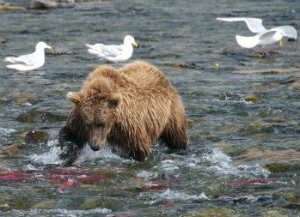
As I research (here, here, here, here, and here), and learn more about the high-finance world of PARCC and Pearson Education (the for-profit company that has been granted $186 million dollars by the United States Department of Education), my confusion is growing, not subsiding. The water ahead of me appears to be churning eerily. It is becoming more perilous.
But I’m a salmon. I know how to find my way back home. I must. I just can’t control the need to keep going.
When I pay attention to my instincts, they tend to drive me forward…by taking me back to the beginning, back to my own home stream, the one where I learned how to really teach kids.
Sharing salmon’s story
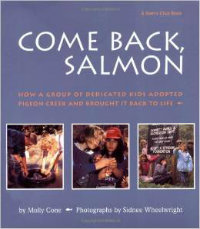
A set of thirty of these books was given to me to use as a resource one September, back in my early years as a teacher. It was a great story then, and it is a great story now.
The class and I read the story earlier this year, during our “official” non-fiction unit. It served as a wonderful tool for exploring narrative non-fiction and text features. The book is filled with related text boxes, colorful pictures with captions, and diagrams. It is adaptable for whole group activities, guided reading, close reading, independent reading, or book clubs.
A break in testing, a return of salmon for Earth Day
Earth Day is approaching. It is time for us to go back to Cone’s story for a quick visit, back to the students at Washington State’s Jackson Elementary (“kids” who must be in their mid-to-late 30’s by now).
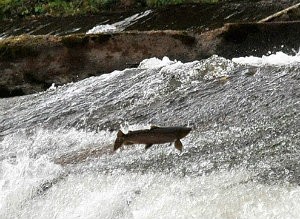
Here are several new and “Mary-friendly” resources I found to explore next time we head upstream for a closer look at non-fiction. Thankfully, many of these resources can still be used this year, as part of Earth Day awareness:
► Links to serious Salmon resources: National Geographic, Discovery Channel, Bloomberg (talk about environmental adaptations!!!!), World Oceans TED Talk with Sylvia Earle (the middle is a bit graphic for my students).
► My favorite, by far, is using a “not-so-serious” clip about salmon swimming upstream. The key to making this video effective is showing a few of the serious videos first. Then, click on this ridiculous and hilarious one for a group laugh at the craziness of the advertising world. It is a great way to take a look at marketing strategies and why they work. My kids loved this spoof!
► Other John West links are here, here and here to make learning fun!…Some more appropriate than others!
Molly Cone’s story about the kids in Washington State stands the test of time. It is a resource that I have found to be highly effective in helping my students develop essential skills for life.
Developing successful skills for life without a timer
According to the people behind PARCC, they share this goal. But their tests don’t assess this. How can you accurately assess what those kids at Jefferson Elementary School learned? How can you assess the impact that Come Back Salmon had on my own students?
I’m the one who sees the effect. I work with them every day. I witness the learning happening. I don’t use many multiple-choice questions to assess this, and I certainly don’t use vague writing prompts that confuse the kids.
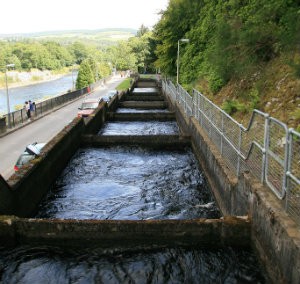
But by next year, the current will inevitably have changed. My teaching methodologies will have adapted as well. I am, after all, a salmon. For now, I am doing my best to swim in the vast ocean that IS Big Business Education, but there sure is a lot of garbage and toxic waste being dumped into the water.
I can’t think “big business” and be a good teacher for my students. I can, however, help them learn how to channel their inner salmon. I can find effective ways to help them develop as learners and encourage them to keep swimming, no matter what.
Other links to swim around in and explore
PBS Kids GO book club (I didn’t do book clubs this year. I did a close-guided combo.)
Montana Fish, Wildlife & Parks (middle school level lesson plans)
science lines (Science and watershed erosion activity)
Brunswick, ME Schools (sample student responses to book to analyze as a class)
Idaho Public TV Science Trek (on-line Salmon resources)


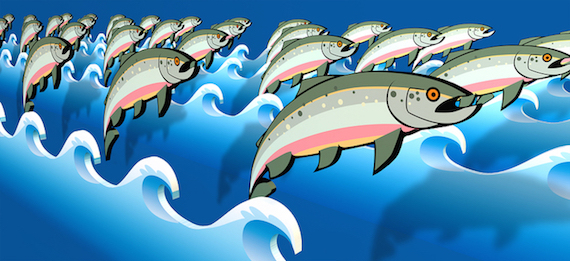
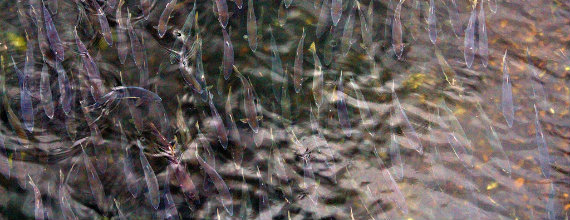

































Great insight!
Thanks, Paula…We just have to keep swimming, I guess.